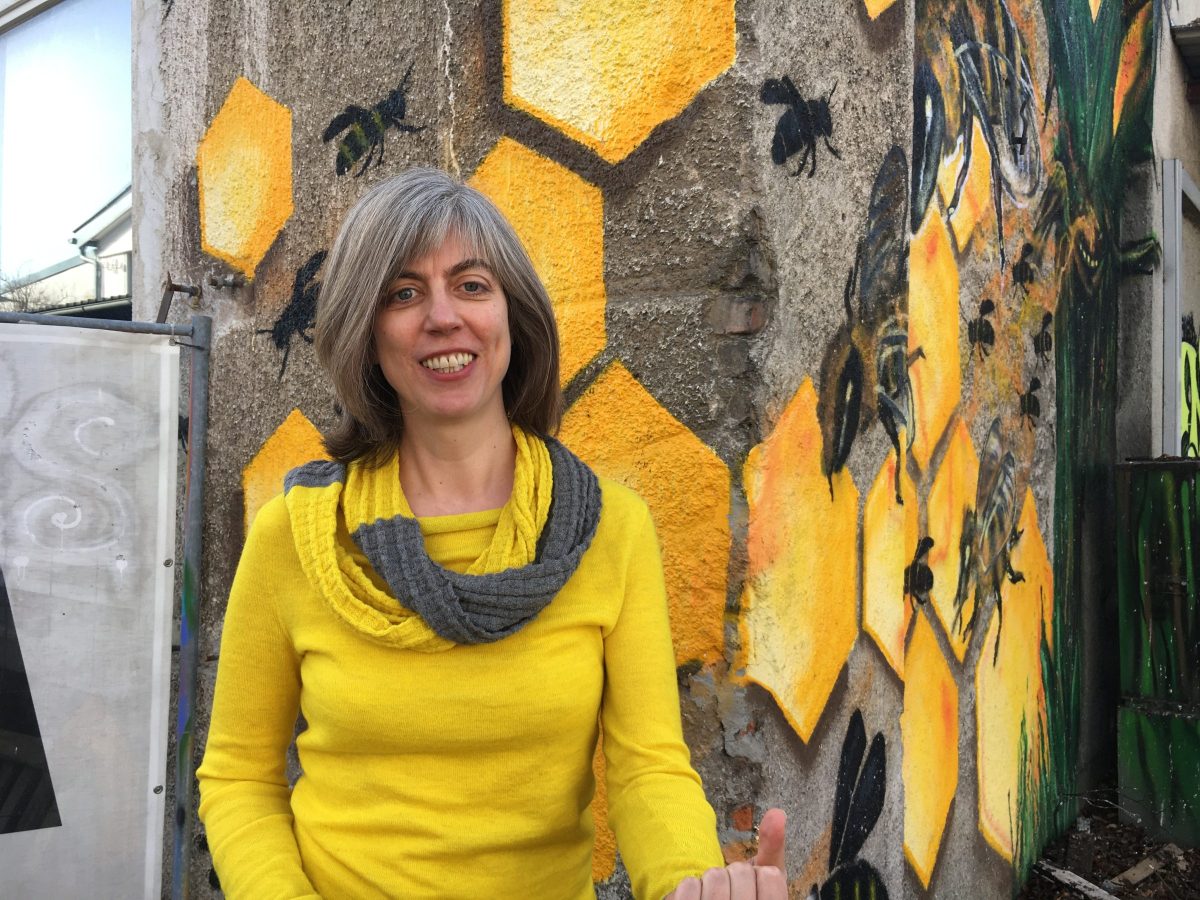Munich Startup: What does circular economy actually mean?
Susanne Mitterer: Our global consumption of resources is constantly increasing – at the same time, these available natural resources are limited: we are therefore coming up against planetary boundaries. Circular economy is a sustainable approach in which resources are used as efficiently as possible and waste is minimized. The idea behind this is that products and materials are kept in a closed cycle instead of ending up as waste after a single use: Just like in nature, all waste is also the starting material for something new.
To achieve this, products must be designed from the outset in such a way that they have the longest possible service life, parts are suitable for reuse later on and can be recycled if necessary. The aim is to ensure that limited resources are used responsibly, taking ecological, social and economic aspects into account.
Munich to be climate-neutral by 2035
Munich Startup: Why are you working so intensively on this topic right now?
Susanne Mitterer: The Munich City Council decided back in 2019 that Munich should be climate-neutral by 2035. Circularity plays a key role in this. The Circularity Gap Report for Munich was published in November 2023. The figures make it clear that we are still at the beginning of a necessary transformation: on average, every Munich resident consumes 32 tons of virgin material per year.
The report estimates that of all the materials used by the local economy each year, 2.4% are recycled materials. So we need to find ways to use resources not as “disposable” materials, but as reusable materials that can be used again and again. There are many exciting solutions in the cultural and creative industries, such as the Circular Design Rules from the Institute of Design Research in Vienna. On the one hand, our industry has to change itself, but at the same time it can also make a significant contribution to social transformation.
Munich Startup: How circular is the cultural and creative industries?
Susanne Mitterer: The circularity of the cultural and creative industries must be viewed in a very differentiated way due to the heterogeneity of the sector. In some creative sub-sectors, such as the fine arts and design, there is a growing awareness that raw materials do not necessarily have to be untouched. As a result, there is an increasing focus on the reuse of materials and upcycling. At the same time, we are facing a major challenge in the fashion sector, for example. We from the Cultural and Creative Industries Competence Team in Munich have therefore been commissioned by the city council to reorganize the Munich Fashion Award as a “Fair and Sustainable Fashion Award” from 2024 on and, in addition to the creative quality of fashion designers, also to honor technological sustainability solutions.

Digital products are recyclable and circular
In the event industry, exciting pilot projects have been implemented across Germany that put the topic of circular economy into practice for large concerts and events, such as Labor Tempelhof. Here, the organizers worked with the bands at concerts by Die Ärzte and Die Toten Hosen to consistently implement the “Cradle to Cradle” theme and are now passing on their experiences and tips to the scene.
Digital media and products, which make up a large part of the cultural and creative industries, are to a certain extent recyclable. Digital content can be reproduced indefinitely, which reduces the need for physical resources. Many creative businesses rely on collaborative approaches and the sharing of resources, be it through coworking spaces or by sharing production equipment. The cultural and creative industries have long been pioneers in this type of “sharing economy”.
Munich Startup: Some companies do not manufacture resource-intensive products, or are positioned more as service providers. Does circularity also play a role here?
Susanne Mitterer: We often start by looking at the CO2 footprint: what does a company’s carbon footprint look like? Where can resources and energy be saved? But there is also the handprint, the impact: how can you contribute to a positive change on a social and economic level? This is where cultural and creative professionals often have a great strength. As a self-employed person, as an entrepreneur, I can consider whether and how I can inspire others through my actions.
Impact and CO2 footprint
A specific example: the young publishing house &töchter has set out to rethink publishing. The content in the publishing program covers current social and ecological issues of our time. They have received a number of awards for this, last year they won the German Publishing Award 2023, thus contributing to awareness-raising and providing impetus. On the other hand, books as a material product are less environmentally friendly than you might think: when printed materials are recycled, some questionable substances are left behind. The publishers of &töchter strive to produce their books as sustainably as possible, but only two books are truly “cradle to cradle”. In this example, the impact of the books has to be weighed up against the environmental impact.
Munich Startup: What does it take to make the positive impact of the industry accessible to others?
Susanne Mitterer: The cultural and creative industries can play a decisive role in supporting the establishment of a circular economy in other sectors. If designers are involved in product development at an early stage, they can act as a driving force for innovative design approaches in which, for example, reuse or second use is already considered and ‑designed in the product development process.
The industry can also act as a mediator when it comes to raising awareness and build a bridge between companies and consumers: through communication, creative campaigns and the creation of emotions and images. This makes complex concepts more accessible and highlights the benefits of sustainable business and living.
A creative lab on the topic of “circular economy” in the cultural and creative industries is currently underway at federal level. Here, new cross-sectoral solutions are being developed with companies and creative professionals.
Circular economy: specific steps for startups
Munich Startup: What could be the first steps towards making your own business model more sustainable and circular?
Susanne Mitterer: Switching to a more sustainable or even circular business model often requires gradual adjustments. The first step could be to carry out a life cycle assessment, for example. There are now many apps and CO2 calculators for this. The City of Munich also offers consultations through its Münchenklima program, which are free of charge for companies with up to ten employees. This helps to understand where the greatest leverage lies in your own work – and where you can take the first steps with affordable effort. It is important to look for opportunities and ways to “get into action” and not view the issue as a huge mountain.
It gets exciting, for example, when you take a look at your own business model in product design and boldly comb against the grain. What happens to a product after use? Can I make it modular or dismantle it? Do I sell an object as such, or can I only offer the use itself as a leasing or sharing model? Such approaches are currently being tested in many cases, for example when fashion is offered for rent instead of purchase. Or when e-bikes are developed in such a way that the individual components can be refurbished and reused.
The key is not to make everything perfectly circular from the outset, but to view sustainability as an integral part of your own business model.
Sustainability as part of the business model
Munich Startup: Where do you see pitfalls when implementing circular business models?
Susanne Mitterer: There aremany challenges that need to be overcome when implementing circular business models. Circular business often requires close cooperation with suppliers, take-back systems and recycling facilities. The complexity of the supply chain can make implementation difficult, especially if it is not sufficiently transparent or flexible. Or the necessary take-back systems are not available across the board.
What’s more, the transition to a circular economy may initially require higher investments. Companies may need to invest in new technologies, recycling infrastructure or training programs for employees and marketing campaigns for customers.
A third challenge is us – the customers. As a society, we are used to products and packaging being developed without regard for the waste they generate. And we must now learn to accept that a book is also valuable if it is not shrink-wrapped. We must be prepared to bring products back into the production cycle and not simply throw them away. And we have to get out of the habit of thinking that used, recycled products are worth less than new products made from new materials. As a creative person, as a company, you also have to take your customers with you on the path to circularity.
Overall, it comes down to a willingness to prioritize long-term goals over short-term challenges.
Financial incentives important
Munich Startup: What needs to change in legislation so that startups can better integrate circular business?
Susanne Mitterer: The introduction of financial incentives such as tax breaks, subsidies or other financial incentives to motivate startups to act in a circular manner is certainly at the top of the list.
On July 1, 2023, the film industry published minimum ecological standards that must be met in order to receive film funding. This is an efficient approach in which film funding, producers and broadcasters have pulled together. This is now also creating a new market for companies that offer innovative solutions to meet these new requirements.
As many startups operate globally, the development of uniform standards and regulations for the circular economy could also help. Only if it is precisely documented during the development of a product or building which materials have been used and how, and attention is paid to subsequent separability, can they later be used in a circular way. Currently, these “burdens” are the responsibility of the individual company, although circular economy creates added value for everyone.
Conscious use of resources must become the rule, not just a laudable exception. So: a circle instead of a crisis!



